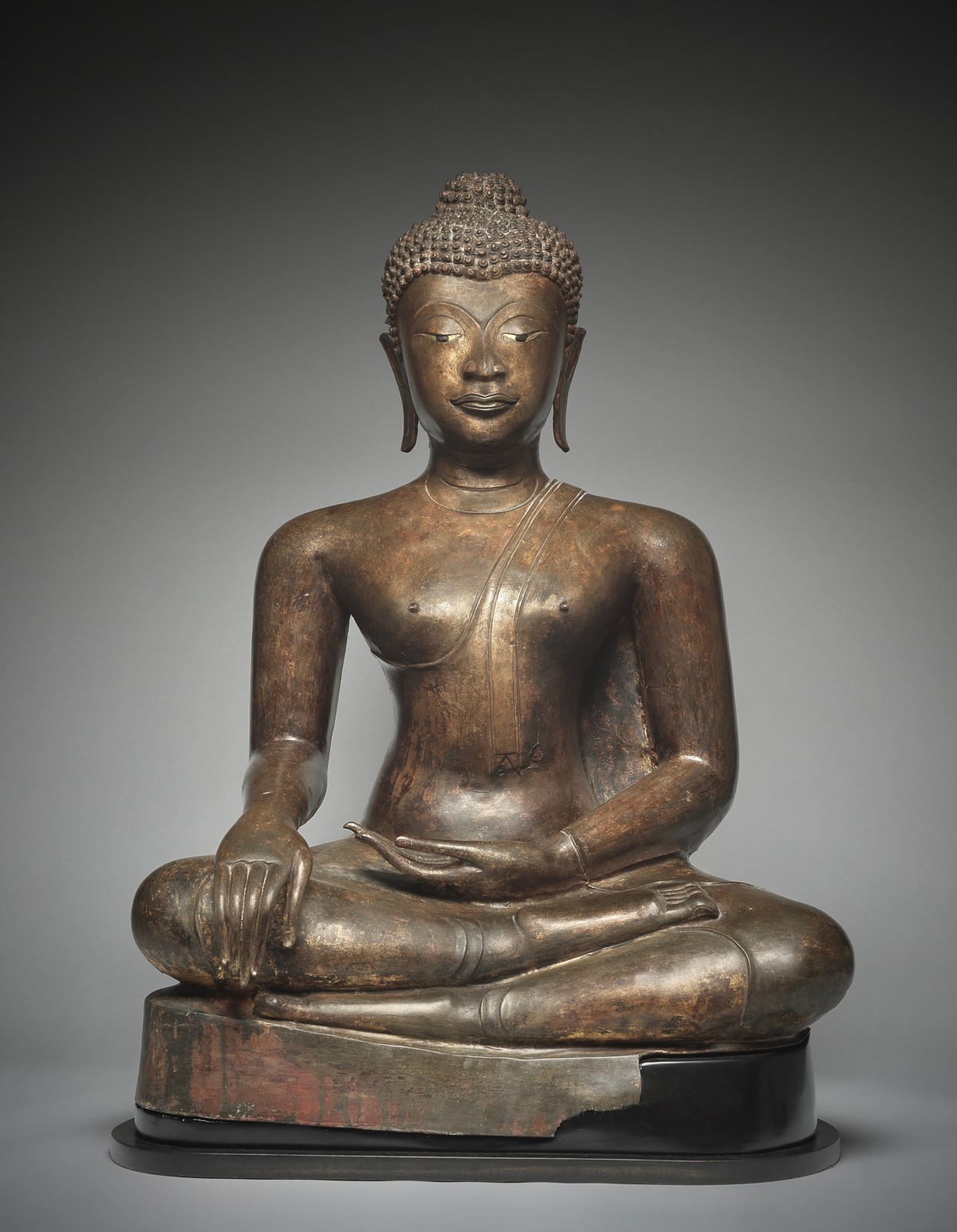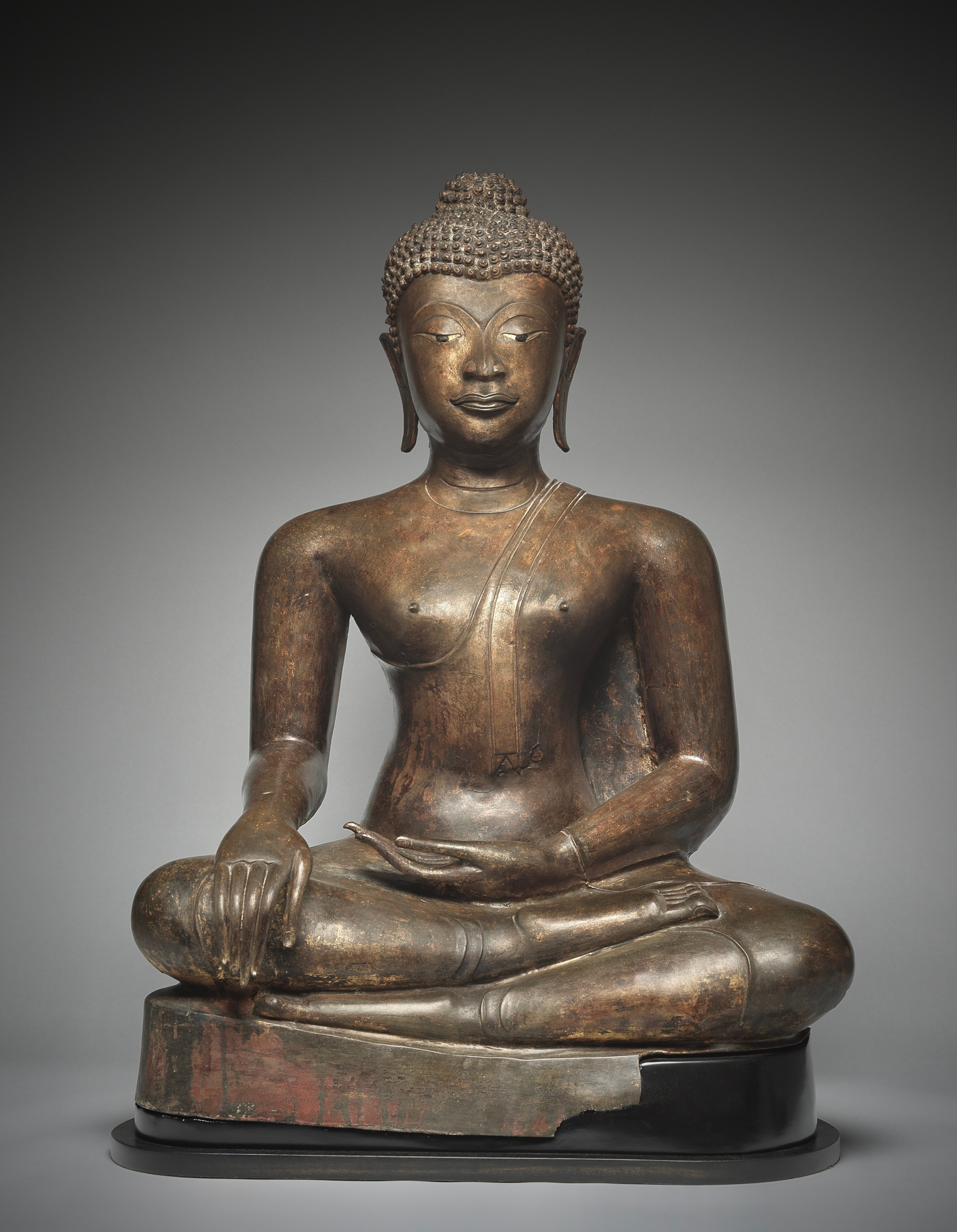
Provenance:
Belgian Private Collection, acquired in the 1970s
This impressive sculpture embodies the apogee of Thai Buddhist art from the 15th century, a period of cultural fusion and artistic refinement that united the ethereal grace of Sukhothai aesthetics with the grounded dignity of the Lan Na style.
The Sukhothai tradition, with its flowing lines, luminous surfaces, and idealized serenity, sought to evoke the Buddha’s spiritual transcendence. In contrast, Lan Na artists of the northern kingdom favored fuller forms, rounder faces, and a contemplative gravity, expressing a more personal and devotional vision of enlightenment. The synthesis of these two sensibilities resulted in some of the most refined and spiritually-resonant sculpture in Thailand.
Buddha is seated in virasana (hero’s pose) with his right hand in bhumisparsa mudra (Earth-touching)—signifying the moment of his enlightenment, with the fingers lowered to touch the earth, while the left hand rests in his lap in dhyana mudra (gesture of meditation). He is wearing a monastic robe leaving his right shoulder bare and with a ribbon-shaped sash in relief falling down his torso. His face possesses the captivating serenity and elegance for which Thai sculpture is renowned. The features are idealized, with downcast, contemplative eyes inset with mother-of-pearl and jet, gracefully arched eyebrows, a prominent nose, and a faint, compassionate smile playing on the finely-outlined lips, all conveying an extraordinary sense of inner peace and tranquility. The earlobes are elongated and pierced; the hair is arranged in rows of snail-shell curls with a domed ushnisha recessed for insertion of a stylized flaming finial.
"Maravijaya" refers to a victory over Mara, a term in Buddhism describing the Buddha’s enlightenment after resisting temptations from demon Mara, the personification of evil and desire. As Mara sent armies and temptations, the Buddha, under the Bodhi tree, touched the earth, calling it as a witness to his virtue and readiness for enlightenment. The earth thundered its affirmation, causing Mara and his forces to flee, a moment depicted in Buddhist art as the earth-touching gesture (bhumisparsa mudra), symbolizing the Buddha's final overcoming of doubt and the attainment of enlightenment. Earth is a symbol of stability, equanimity, and enduring patience in Buddhist traditions, all qualities the Buddha demonstrated.

